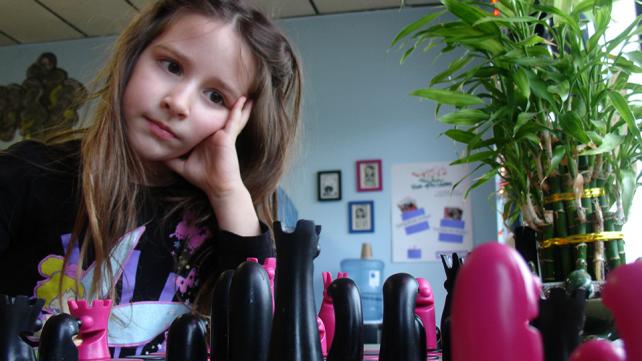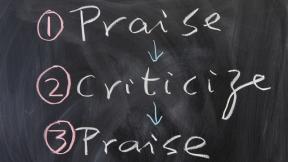
A community of thinkers is a collection of individuals interacting in mutually supportive ways to nurture critical reflection.
If we are serious about critical thinking we must establish the conditions that are likely to nurture the required attributes. This involves infusing expectations and opportunities to think critically in all our students’ school lives. If classroom and school routines do not consistently reinforce thoughtful reflection, then little or no lasting gains can be expected from occasional lessons on critical thinking.
This point was affirmed by studies of the effects of educational programs on developing respect for others. Various researchers have found that the specifics of the curriculum have a marginal impact on this key attitude—the classroom climate is the determining factor (cf., Daniels & Case, 1992, pp. 19-23). If teachers solicit and value student opinions, and provide a healthy forum for student dialogue, then students are more likely to come to respect other’s opinions.
Generally speaking, in promoting critical thinking the influence of the hidden curriculum—the latent norms and subtle messages that powerfully affect what students actually learn—has been underestimated or overlooked. Consider, for example, the tendency of many people to cast issues in dichotomous terms—as black or white, and right or wrong.
This attitude is reinforced by the traditional classroom debate that has been the paradigm format for engaging students in issue discussion. In a two-sided debate the objective is to prove that the opposing side is without merit by refuting, belittling or ignoring opposing arguments. There is a tacit prohibition against changing one’s mind part way through the debate. Crossing to the other side is like crossing the floor of the House of Commons—both are seen as betrayals.
Increasingly teachers are replacing this adversarial, closed-minded format with more open-ended discussions where students are encouraged to see the merits of all sides and to recast binary options as extreme positions along a continuum.
To facilitate this approach, class discussions may be configured in a U shape—students with polar views (either strongly agreeing or strongly disagreeing) locate themselves at either end, and students with mixed opinions sit along the rounded part. At varying stages in the discussion students are encouraged to move physically along the “U” as their inte1lectual position on the issue changes. In this way, less dogmatic attitudes are reinforced.
Why Build Community of Thinkers?
Building a community of thinkers is vital for, at least, two reasons:
- Critical thinking is not a set of abilities that one uses from time to time, such as learning how to cook or how to play basketball. Critical thinking is a way of approaching almost everything that one encounters. This mindset will not develop if classroom routines transmit inconsistent messages or fail to reinforce this expectation.
- The classic image of the isolated thinker is a misleading one; we should not expect to be able to think through all of our “problems” by ourselves. Rather we should actively develop, supplement and test our ideas in conjunction with others— to put our heads together. But many students may be unwilling or unable to contribute to and benefit from collaborative reflection. Perhaps, they do not listen very well, or they cannot accept any form of criticism, or they do not know how to monitor what they say, or they have no confidence in their ability to add to the discussion. Students will acquire these tools only through participation as a member in a community of thinkers.
How to Transform Our Classrooms into Communities of Thinkers
Nurturing the appropriate climate is an orientation that pervades all of our actions. We can transform our classrooms into communities of thinkers by working in the following ways:
- setting appropriate classroom expectations;
- implementing appropriate classroom routines and activities;
- personally modeling the attributes of a good critical thinker;
- employing effective group questioning techniques;
- developing the tools for student participation in a reflective community
Classroom Expectations
Teachers’ expectations of their students are often self- fulfilling. Specific expectations that support a community of thinkers are:
- students are expected to make up their own minds— not simply take someone’s word for things;
- students and teachers are expected as a matter of course to provide reasons or examples in support of their observations, conclusions and behaviour;
- students and teacher are expected to seriously consider other perspectives on a issue and alternative approaches to a problem before reaching a firm conclusion;
- all persons are to be treated respectfully by everyone, even if their ideas are wrong or silly;
- disputes about ideas are encouraged, but they must never be directed personally or be mean-spirited;
- it is not acceptable merely to criticize and complain— the pros of a position should always be examined as should possible solutions to problems;
- the insincere use of critical techniques to show off or to be contrary is not tolerated (this does not mean that there is no place for well-intentioned devil’s advocacy).
Classroom Routines and Activities
A community of thinkers can be supported by building into the daily classroom operation various routines and activities that habituate students to particular frames of mind. Some of the routines that support a critical community are:
- the vocabulary of critical thinking is used as a matter of course in classroom discussion (e.g., Asking “What can you infer from this picture about the individual’s state of mind?” “What assumptions are you making?”);
- assignments, including those that are for marks, consistently contain a non-trivial commitment to thinking critically;
- students regularly scrutinize textbooks, news articles and reports, and other “reputable” sources of information for bias, stereotyping, overgeneralization and inaccuracy;
- student ideas and suggestions are regularly considered and (when appropriate) accepted in setting assignments, establishing rules for the class and establishing criteria for evaluation;
- thoughtfully supported, insightful or empathic responses (even if flawed) are to be valued more than merely correctly recalled responses;
- students regularly explore and defend positions from particular points of view, especially from perspectives that are not personally held by them;
- students regularly identify and defend criteria to evaluate their classroom behaviour and work, and then apply these criteria to themselves and their peers;
- the conditions for thoughtful reflection are respected—students are given adequate time to reflect and provided with the tools to address their tasks critically (e.g., students should not be expected merely to guess).
Teacher Modeling
It has been said “Example is not the best way to influence people, it’s the only way” (reported in Norman, 1989, p. 27). This principle applies to critical thinking. If we want our students to be good critical thinkers we must model these attributes ourselves. We may want to consider being a role model in the ways suggested below:
- not being dogmatic and not always having the answer—living with ambiguity—being satisfied with tentative conclusions until full review of complex issues can be carried out;
- sincerely attempting to base all comments and decisions on careful and fair-minded consideration of all sides;
- be willing (if asked) to provide “good” reasons for our decisions and actions (This does not mean that every time any student asks for a justification that the lesson must be interrupted);
- being careful to avoid making gross generalizations and stereotypical comments about individuals and groups, and seeking to expose stereotypes in books, pictures, films and other learning resources;
- being willing to change our mind or alter our plans when good reasons are presented;
- always acknowledging the existence of different positions on an issue (e.g., looking at events from different cultural, gender and class perspectives);
- not being cynical—adopting, instead, a realistic but questioning attitude toward the world.
Questioning Techniques
We can support a community of thinkers by being effective questioners. We must pose questions that go beyond recall or retrieval of information by inviting students to make reasoned judgments. We can further support critical thinking by consistently responding to student comments using non-threatening probing techniques such as those listed below (Saskatchewan Education, 1988, p. 34):
Seeking greater clarity:
• Could you give me an example?
• Is your point “this” or “this”?
Probing for assumptions:
• You seem to be assuming that...
• Is this always the case?
Probing for reasons or evidence:
• Is there reason to doubt this evidence?
• How could we find out if this is true?
Exploring alternatives perspectives:
• How might other groups respond?
• What would people who disagree with your position say?
Probing consequences and implications:
• What effect would this have?
• If this were the case, what else must also be true?
Tools for Community Participation
Just as students are taught to be good citizens, so too students need to be taught how to be effective contributors to and beneficiaries of a community of thinkers. Many of the tools employed in individual reflection apply here, however other tools are uniquely employed in collaborative deliberation. Some of these tools are suggested below.
Background knowledge
• knowledge that individuals may see things in significantly different ways;
• knowledge of how individuals are likely to react in various situations;
Criteria for judgment
• ensuring one’s comments are relevant to the discussion (on topic);
• ensuring one’s comments are expressed in a manner that will be clear to everyone;
Critical thinking vocabulary
• unanimous, consensus, minority positions;
Thinking strategies
• group management strategies such as taking turns, assigning cooperative roles, active listening and keeping a speaker’s list;
• strategies for critiquing in a non-threatening manner including putting the comment in the form of a question, preceding comment with a caveat or preceding comment with positive remarks;
• strategies for presenting information in group settings including limiting comments to a few points, speaking from notes and connecting remarks to previous speaker’s comments.
Habits of mind
• independent-minded---willingness to stand up for firmly held beliefs;
• sensitivity to others—attention to the feelings of others;
• self-monitoring—attention to how one’s actions are affecting the group.
Source: “Taking Seriously the Teaching of Critical Thinking” by Ronald Case & Ian Wright. Published in Canadian Anthology of Social Studies.





Add new comment